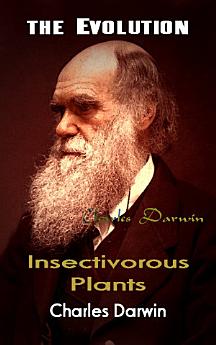Insectivorous Plants: the Evolution
eBook 정보
DROSERA ROTUNDIFOLIA, OR THE COMMON SUN-DEW.
part, which alone is capable of movement, consists of a prolongation of the leaf; the spiral vessels being extended from this to the uppermost part. We shall hereafter see that the terminal tentacles of the divided leaves of Roridula are still in an intermediate condition.
CHAPTER II.
THE MOVEMENTS OF THE TENTACLES FROM THE CONTACT OF SOLID BODIES.
CHAPTER III.
AGGREGATION OF THE PROTOPLASM WITHIN THE CELLS OF THE TENTACLES.
CHAPTER IV.
THE EFFECTS OF HEAT ON THE LEAVES.
CHAPTER V.
THE EFFECTS OF NON-NITROGENOUS AND NITROGENOUS ORGANIC FLUIDS ON THE LEAVES.
CHAPTER VI.
THE DIGESTIVE POWER OF THE SECRETION OF DROSERA.
CHAPTER VII.
THE EFFECTS OF SALTS OF AMMONIA.
CARBONATE OF AMMONIA.
[ NITRATE OF AMMONIA.
PHOSPHATE OF AMMONIA.
CHAPTER VIII.
THE EFFECTS OF VARIOUS OTHER SALTS AND ACIDS ON THE LEAVES.
COLUMN 1 : SALTS CAUSING INFLECTION. COLUMN 2 : SALTS NOT CAUSING INFLECTION.
COLUMN 1 : SALTS CAUSING INFLECTION. COLUMN 2 : SALTS NOT CAUSING INFLECTION.
ACIDS.
ACIDS, MUCH DILUTED, WHICH CAUSE INFLECTION.
ACIDS, DILUTED TO THE SAME DEGREE, WHICH DO NOT CAUSE INFLECTION.
CHAPTER IX.
THE EFFECTS OF CERTAIN ALKALOID POISONS, OTHER SUBSTANCES AND VAPOURS.
CHAPTER X.
ON THE SENSITIVENESS OF THE LEAVES, AND ON THE LINES OF TRANSMISSION OF THE MOTOR IMPULSE.
CHAPTER XI.
RECAPITULATION OF THE CHIEF OBSERVATIONS ON DROSERA ROTUNDIFOLIA.
CHAPTER XII.
ON THE STRUCTURE AND MOVEMENTS OF SOME OTHER SPECIES OF DROSERA.
CHAPTER XIII.
DIONAEA MUSCIPULA.
CHAPTER XIV.
ALDROVANDA VESICULOSA.
CHAPTER XV.
DROSOPHYLLUM—RORIDULA—BYBLIS—GLANDULAR HAIRS OF OTHER PLANTS— CONCLUDING REMARKS ON THE DROSERACEAE.
RORIDULA.
BYBLIS.
CONCLUDING REMARKS ON THE DROSERACEAE.
CHAPTER XVI.
PINGUICULA.
PINGUICULA GRANDIFLORA.
PINGUICULA LUSITANICA.
CHAPTER XVII.
UTRICULARIA.
[ UTRICULARIA VULGARIS.
UTRICULARIA MINOR.
UTRICULARIA CLANDESTINA.
CHAPTER XVIII.
UTRICULARIA NELUMBIFOLIA, AMETHYSTINA, GRIFFITHII, CAERULEA, ORBICULATA, MULTICAULIS.
POLYPOMPHOLYX.
GENLISEA.
평점 및 리뷰
저자 정보
Charles Robert Darwin ( 12 February 1809 – 19 April 1882) was an English naturalist and geologist, best known for his contributions to evolutionary theory. He established that all species of life have descended over time from common ancestors, and in a joint publication with Alfred Russel Wallace introduced his scientific theory that this branching pattern of evolution resulted from a process that he called natural selection, in which the struggle for existence has a similar effect to the artificial selection involved in selective breeding.
Darwin published his theory of evolution with compelling evidence in his 1859 book On the Origin of Species, overcoming scientific rejection of earlier concepts of transmutation of species. By the 1870s, the scientific community and much of the general public had accepted evolution as a fact. However, many favoured competing explanations and it was not until the emergence of the modern evolutionary synthesis from the 1930s to the 1950s that a broad consensus developed in which natural selection was the basic mechanism of evolution. In modified form, Darwin's scientific discovery is the unifying theory of the life sciences, explaining the diversity of life.
Darwin's early interest in nature led him to neglect his medical education at the University of Edinburgh; instead, he helped to investigate marine invertebrates. Studies at the University of Cambridge (Christ's College) encouraged his passion for natural science. His five-year voyage on HMS Beagle established him as an eminent geologist whose observations and theories supported Charles Lyell's uniformitarian ideas, and publication of his journal of the voyage made him famous as a popular author.
Puzzled by the geographical distribution of wildlife and fossils he collected on the voyage, Darwin began detailed investigations and in 1838 conceived his theory of natural selection. Although he discussed his ideas with several naturalists, he needed time for extensive research and his geological work had priority. He was writing up his theory in 1858 when Alfred Russel Wallace sent him an essay that described the same idea, prompting immediate joint publication of both of their theories. Darwin's work established evolutionary descent with modification as the dominant scientific explanation of diversification in nature. In 1871 he examined human evolution and sexual selection in The Descent of Man, and Selection in Relation to Sex, followed by The Expression of the Emotions in Man and Animals. His research on plants was published in a series of books, and in his final book, he examined earthworms and their effect on soil.
Darwin has been described as one of the most influential figures in human history; he was honoured by burial in Westminster Abbey.











